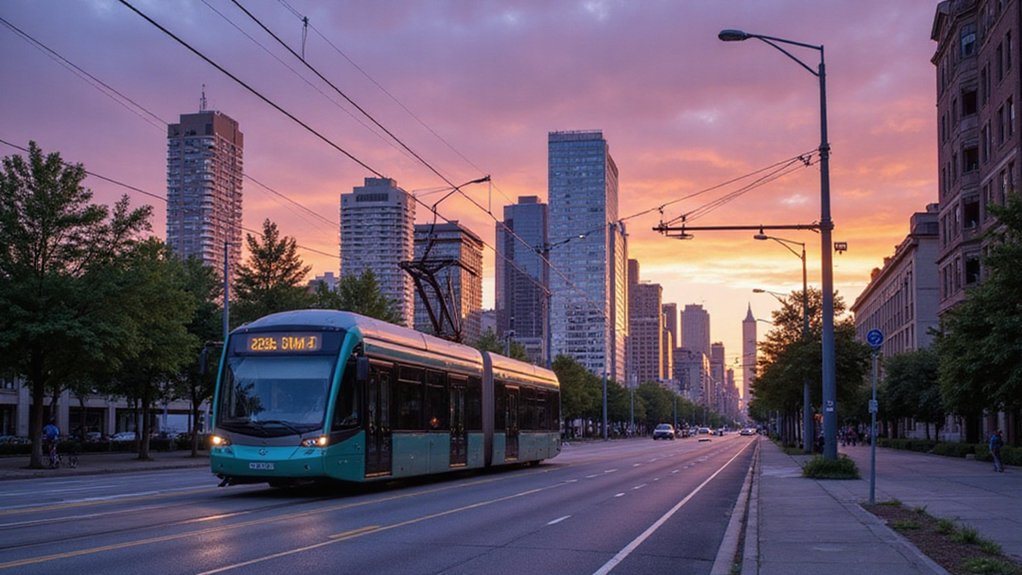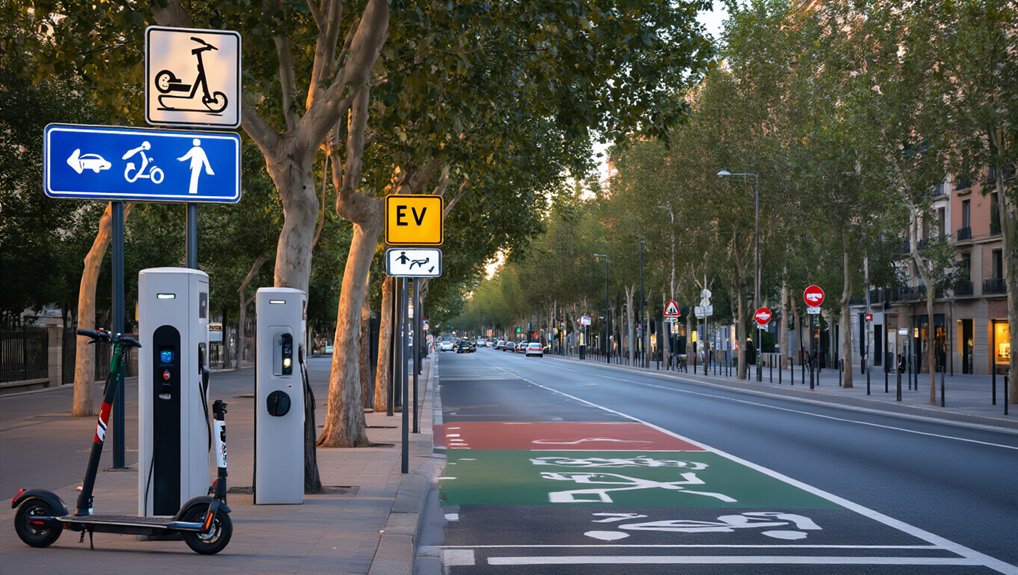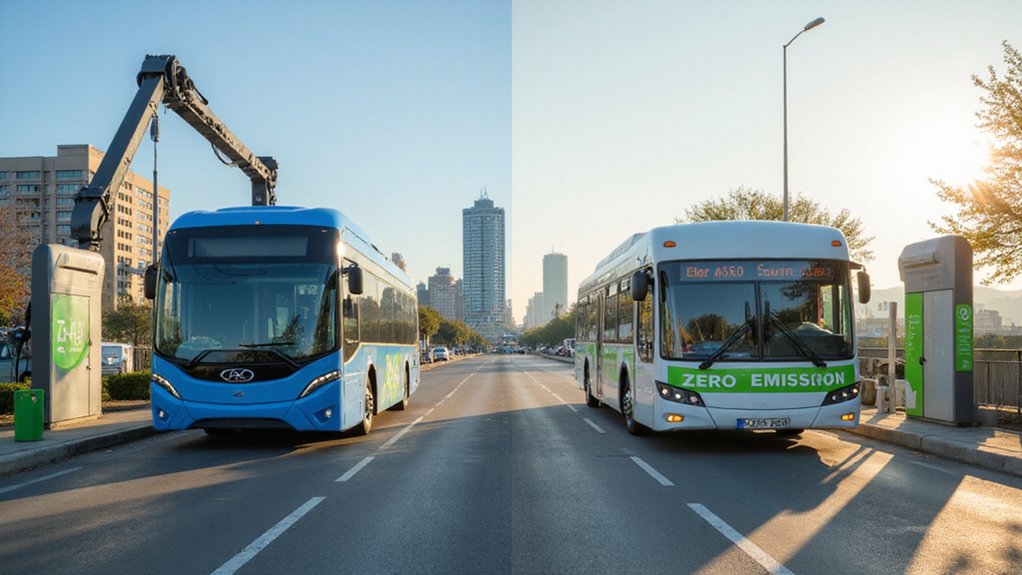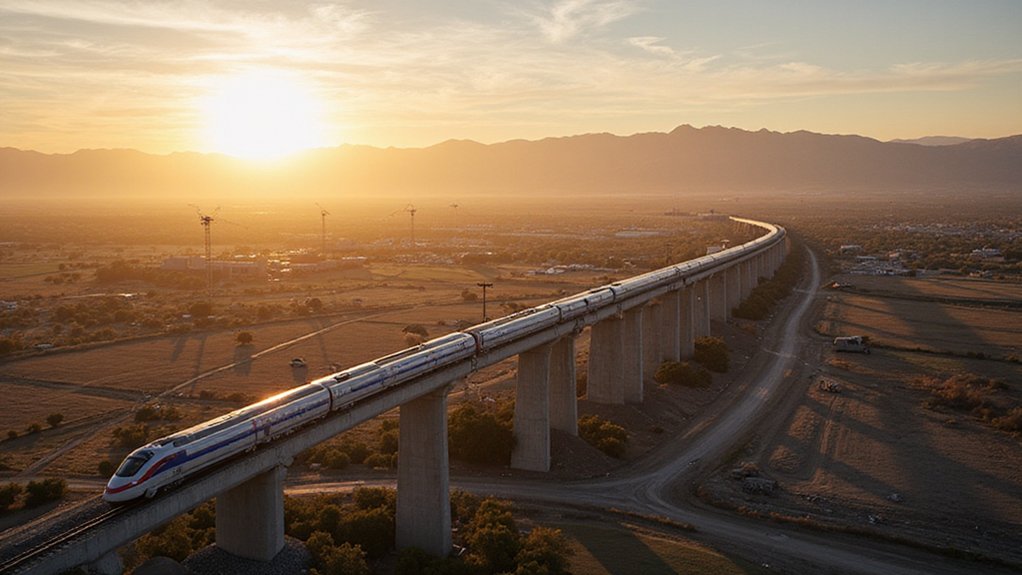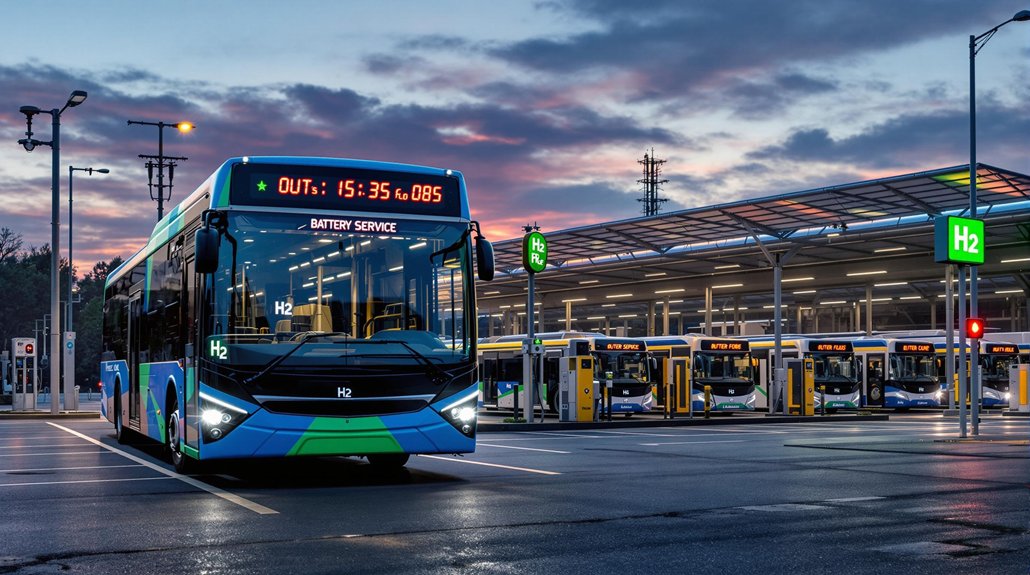While many cities chase flashy, expensive transit solutions, trolleybuses are making a surprisingly strong comeback. Valued at $1.35 billion in 2024, the global trolleybus market is projected to grow at a steady 3.2% annually through 2034. Not bad for technology some considered obsolete a decade ago.
Cities aren’t choosing trolleybuses because they’re nostalgic. They’re practical. These overhead-wire warriors offer a cheaper path to 100% electric fleets by 2035. Why reinvent the wheel when the infrastructure already exists? Smart move.
Practicality trumps nostalgia. These wire warriors are paving the electric path forward without reinventing infrastructure.
The tech advantages are pretty compelling. Dual-mode trolleybuses can operate on both overhead wires and battery power—like having your cake and eating it too. They handle steep hills without breaking a sweat and don’t lug around massive battery packs like their fully-electric cousins. And they last longer. Much longer. Modern systems now feature In-Motion Charging technology that significantly improves efficiency and operational flexibility.
Beijing gets it. Their system boasts 31 routes with over 1,250 dual-mode trolleybuses, including three high-volume bus rapid transit lines. They’ve been at it since 1957. Talk about commitment.
In New York City, buses crossing rivers saved up to four minutes per trip after implementing similar systems. That’s 30-40% faster on inbound river crossings. Not exactly teleportation, but in NYC traffic? Practically miraculous.
The economics make sense too. Lower energy consumption plus longer vehicle lifespans equals competitive total ownership costs. Math isn’t complicated here, folks.
What’s really impressive is how these systems integrate with existing infrastructure. Dense urban environments with limited space for charging stations? Perfect for trolleybuses. Need near-continuous service? They’ve got you covered. Want to tap into renewable power sources? Easy connection. Electric trolleybuses currently hold a 65% market share in the global trolley bus sector, demonstrating their dominance over hybrid alternatives. Like wind energy systems, they produce zero carbon emissions during operation, making them an environmentally responsible choice for urban transportation.
Look, not every transit solution needs to involve tunneling under cities or building elevated tracks. Sometimes the answer has been overhead all along. Literally.
Cities worldwide are rediscovering what Beijing never forgot: trolleybuses just work. Simple as that.
References
- https://cleantechnica.com/2025/05/14/why-modern-cities-are-embracing-trolleybuses-again/
- https://www.gminsights.com/industry-analysis/trolley-bus-market
- https://www.apta.com/wp-content/uploads/APTA-Policy-Brief-Transit-Ridership-May-2025.pdf
- https://data.ny.gov/Transportation/MTA-Daily-Ridership-Data-2020-2025/vxuj-8kew
- https://www.mta.info/press-release/mta-releases-preliminary-traffic-and-transit-data-first-work-week-under-congestion
